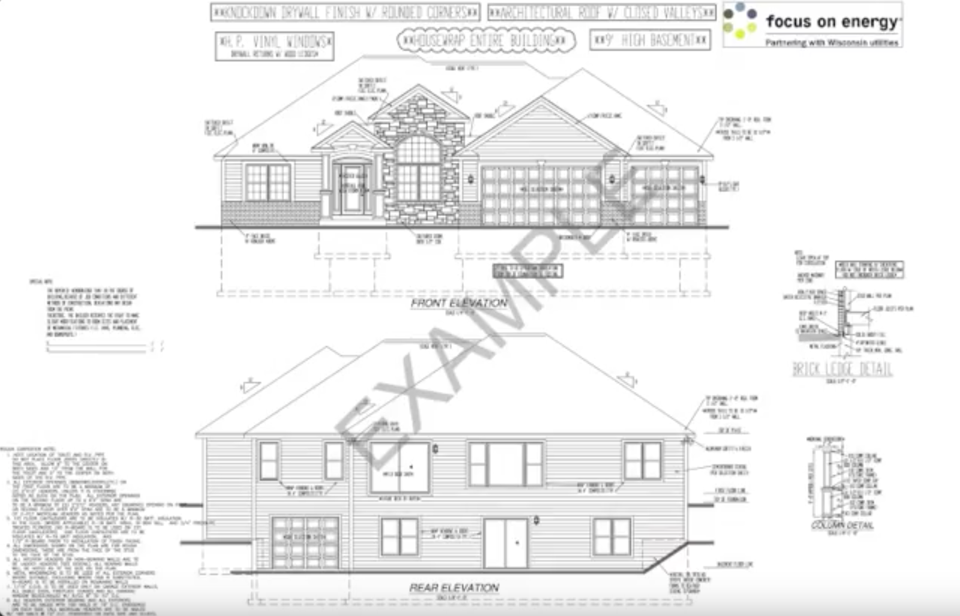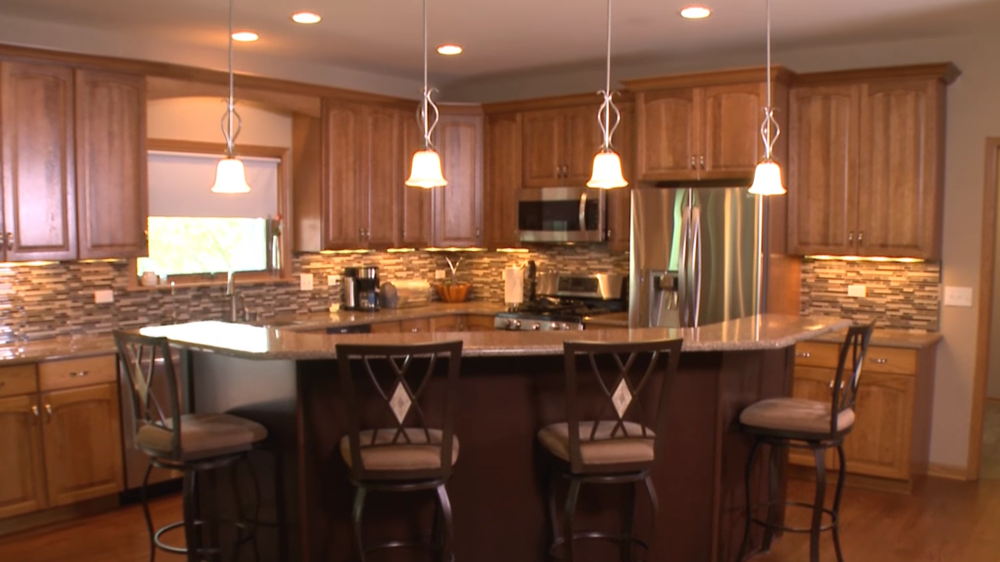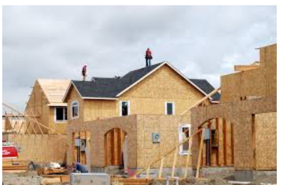Housing and Construction Defects – An Overview
A house is generally a homeowners’ single most valuable financial investment and one of the most important emotional investments. To them it is more than bricks and mortar; it is the place where they live, rest, and raise their families. Unfortunately, hundreds of thousands of unsuspecting homeowners realize their new homes suffer from some type of construction defect that will cost thousands of dollars to repair, depreciate the value of their home, or force them to leave their homes.
Construction defects cover a broad spectrum from minor problems like popped nails and peeling paint to situations when a house must be bulldozed. Some cases involve leaky windows that have led to toxic-mold contamination. Other problems include faulty design, code violations, cracked foundations, substandard workmanship, and unsafe structures.
The number of construction-defect cases has surged in recent years because houses are being constructed in record numbers to meet the high demand for housing. Many general contractors are inexperienced and others mass-produce thousands of houses. The home construction industry is intensely competitive. Many builders respond to the competition with low bids for contracts, then cut corners, frequently employ unskilled or overworked subcontractors, and poorly supervise subcontracted work. At a time when government regulation is more
important than ever, government inspection departments do not have the funding to adequately inspect homes and often approve below-par construction. The combination of these factors results in homes that are built with serious defects.
Types of Construction Defects
Construction defects usually include any deficiency in the performing or furnishing of the design, planning, supervision, inspection, construction or observation of construction to any new home or building, where there is a failure to construct the building in a reasonably workmanlike manner and/or the structure fails to perform in the manner that is reasonably intended by the buyer. Some of the most common and high-cost construction defects include:
Structural integrity – concrete, masonry & division, carpentry, unstable foundations
Expansive soils
Mechanical
Electrical
Water intrusion (often resulting in toxic mold)
Thermal and moisture protection
Doors, windows, and glass
Finishes
Generally, courts categorize construction defects in one of four categories: design deficiencies, material deficiencies, construction deficiencies, or subsurface deficiencies.
Design Deficiencies
Design professionals, such as architects or engineers, who design buildings and systems do not always work as specified, which can result in a defect. Typical design deficiencies relate to building outside of the specified code. Roofs are an example of a typical design defect that results in water penetration, intrusion, poor drainage, or inadequate structural support.
Material Deficiencies
The use of inferior building materials can cause significant problems, such as windows that leak or fail to perform and function adequately, even when properly installed. Window leaks can result from many things including, rough framing not being flush with outside at openings, improperly flashed windows, improperly applied building paper, window frame racked during storage/moving, lack of sheet metal drip edge above window header, etc. Common manufacturer problems with building materials can include deteriorating flashing, building paper, waterproofing membranes, asphalt roofing shingles, particle board, inferior drywall and other wall products used in wet and/or damp areas, such as bathrooms and laundry rooms.
Construction Deficiencies – Defects
Poor quality workmanship can result in a long list of defects. A typical example is water infiltration through some portion of the building structure, which may create an environment for the growth of mold. Other problems include cracks in foundations or walls, dry rotting of wood, electrical and mechanical problems, plumbing leaks, or pest infestation.
Subsurface Deficiencies
Expansive soil conditions are typical. Many houses are built on hills or other areas where it is difficult to provide a stable foundation. A lack of a solid foundation may result in cracked foundations or floor slabs and other damage to the building. If subsurface conditions are not properly compacted and prepared for adequate drainage, it is likely the property will experience problems such as improperly settling to the ground (subsidence), the structure moving or shifting, flooding, and in many cases more severe problems such as landslides.
Legal Theories
The typical construction defect cases are based on the contracts between the homeowner and developer and the contracts between the contractor and subcontractors, including suppliers, architects and engineers, involved in building the home. The goal is to require the party who is responsible for the defect to remedy the situation. The complaint against the defendants typically alleges negligence, breach of contract or warranty, strict liability, and in some instances, fraud or negligent misrepresentation may be alleged.
Negligence
The law imposes the obligation upon the developer/general contractor/subcontractor to exercise the reasonable degree of care, skill and knowledge that is ordinarily employed by such building professionals. The duty of care is extended to all who may “foreseeably be injured by the construction defect”, including subsequent purchasers. Developers and general contractors are responsible for the negligence of their subcontractors.
Breach of Contract
Homeowners can sue the builder/developer, under theories based upon privity of contract, for breach of any obligation set forth in the purchase and sale documentation, and/or the escrow instructions. Typically, this is something that goes beyond the failure of the builder to build the project in accordance with the plans and specifications.
When such claims are made, courts often invoke the doctrine of substantial performance, which typically requires the builder to pay the contract price with the deduction for the reduced market value of the home/unit caused by the failure of the builder to strictly comply with the plans and specifications.
Breach of Warranty
Similar to a breach of contract theories, the purchase documentation between the developer and the homeowner often sets forth warranties regarding the condition of the property. If there is an issue as to breach of an express warranty, the principles of contract apply. Courts have held that builders and sellers of new construction should be held to what is implied, that the completed structure was designed and constructed in a reasonably workmanlike manner. A builder/vendor is subject to the theory that a home was built for sale to the public to be used for a specific purpose. Privity of contract is not always required under this particular theory of liability.
In some states, homebuyers may waive or builders may disclaim implied warranties. If disclaimers are involved, they are strictly construed against the seller/developer. Typically, waivers are difficult to enforce.
Strict Liability Claims
In most jurisdictions, the implied warranty of habitability imposes strict liability on the general contractor. The theory of strict liability against a general contractor evolved from products liability law. In a strict liability case, the plaintiff does not have to prove the general contractor or developer was negligent in the construction of the home. They do have to prove the defendant was involved in the mass production of housing, a defect in the house exists, damages were proximately caused by the defect, and the defendant caused or created the defect.
Fraud and Negligent Misrepresentation
Fraud is alleged on the grounds that the developer intentionally misrepresented the quality of construction in false statements or advertisements. It must be shown the developer had no intention of following the design plans and specifications as promised.
Negligent misrepresentation is based on proving the developer asserted something as factual but had no reasonable basis for believing the information to be true.
Limits on Potential Claims
Most states impose time limits on construction defect claims by Statutes of repose and statutes of limitations. Statutes of repose specify the time period within which a cause of action can arise at all. Under these statutes, the limitation period may expire before the plaintiff’s cause of action has arisen. Conversely, statutes of limitation foreclose suits after a fixed period of time following the occurrence or discovery of an injury. These statutes are complex and vary from state to state. It is critical that you seek the advice of an experienced attorney if you believe the damages to your home are the result of a construction defect before you lose your right to seek a remedy from the responsible parties.
In most states, the time limits begin to run when the defect is discovered or should have been discovered by a reasonable person. If the defect is patent or apparent based on reasonable inspection, the action against a defendant must begin within the time period specified by state law. If the defect is latent, or not readily apparent by reasonable inspection, any action to recover damages generally must be within ten years after improvements are substantially completed.
Conclusion
Construction defect litigation is complex. It may involve several defendants, include insurance companies and involve many legal theories. Most states impose complex time limits on when a claim may be brought. If you believe your home suffers from a defect caused by the builder, or another party, protect your rights. Talk to an attorney with experience in this complex area of law.
DISCLAIMER: This site and any information contained herein are intended for informational purposes only and should not be construed as legal advice. Seek competent legal counsel for advice on any legal matter.




